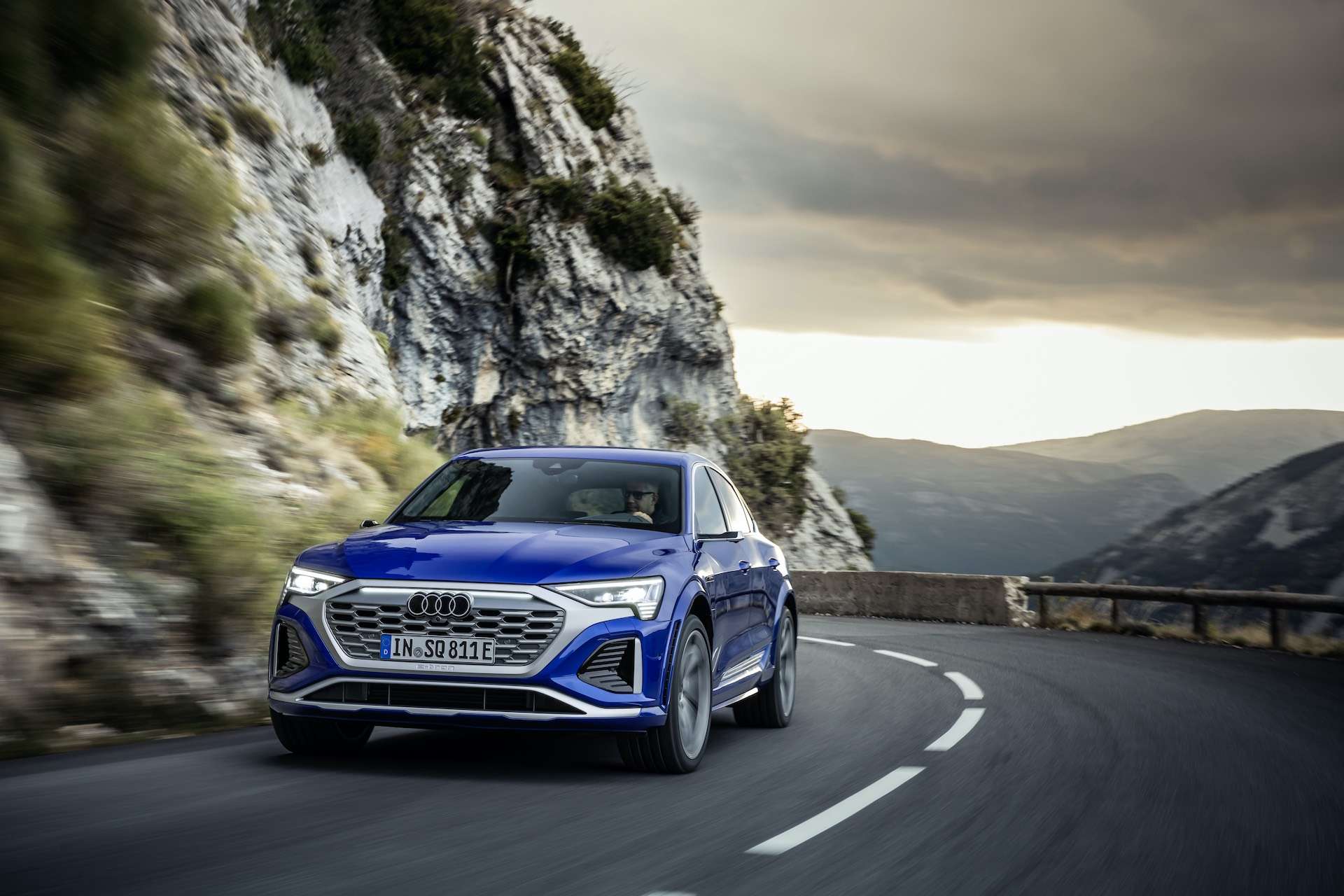Audi e-tron, the premium manufacturer’s electric SUV, entered the age of electromobility in 2018 and has set standards in the electric luxury-class SUV segment. The all-new Audi Q8 e-tron builds on this success story. Audi has been following a systematic electric roadmap since the introduction of the Audi e-tron around four years ago. The Audi Q8 e-tron has improved efficiency and range, and a refined design, and will be available in more than 20 countries by 2026.

Audi Q8 55 e-tron6 and Audi Q8 Sportback 55 e-tron7 have a range of up to 582 km and a top speed of 200 km/h. Audi Q8 e-tron has two battery sizes: Q8 50 e-tron4 has 89 net kilowatt-hours (95 gross kWh) and Q8 55 e-tron6 and SQ8 e-tron2 have 106 net kilowatt-hours (114 gross kWh). There is a maximum charging speed of 11 kW for the Q8 e-tron. Using alternating current, the Audi Q8 50 e-tron4 can fully charge in nine hours and 15 minutes at 11 kW and six hours at 22 kW. In 2023, Audi will launch its new charging service.
With the same amount of electricity input, the Audi Q8 e-tron’s 14-coil asynchronous motor generates a stronger magnetic field. With more torque and boosted performance of up to 370 kW, the engine can deliver more power. Air-spring suspension with controlled shock absorption is standard on the new Audi Q8 e-tron. Due to its electronic stability control (ESC), it is easier to maneuver in tight corners, and the steering is much more responsive.
Compared to the Audi Q8 Sportback e-tron, the Audi Q8 e-tron has a lower drag coefficient and rear wheel spoilers. A self-sealing system prevents unwanted losses at the grille. There are around 40 driver assistance systems in the Audi Q8 e-tron, including remote park assist plus, which can maneuver into even the tightest parking spaces. A digital matrix LED headlight, enhanced traffic information, a lane light with a direction indicator, and an orientation light are optionally available on the Q8 e-tron.
As a result of the glass panorama roof, the interior appears lighter and more spacious. A blackout sunshade can also be controlled electronically so that it can be opened and closed electronically. There are two large, high-resolution displays in the Audi Q8 e-tron, as well as a natural voice control system. Based on previously traveled routes, the navigation system intelligently recommends destinations with a heads-up display. Some components of the Audi Q8 e-tron are made from recycled materials, and the car is certified to be net-carbon neutral in Europe and the United States.
Audi Q8 e-tron’s interior is made from recycled materials, including PET bottles, recycled textiles, and fiber residue. Synthetic leather and Dinamica microfiber are used to cover the sport seats. For the first time, Audi Q8 e-tron series production uses mixed automotive plastic waste treated through a chemical recycling process developed with LyondellBasell.
Through voluntary offset projects carried out worldwide, Audi’s net-zero carbon emissions policy offsets carbon emissions from its products, activities, and supply chain. A minimum of 70 percent of the plastic granulate used in the seatbelt buckle covers comes from waste-based pyrolysis oil produced through the project. Through a qualified credit transfer, this oil is assigned to the seatbelt buckle covers on the Q8 e-tron.
